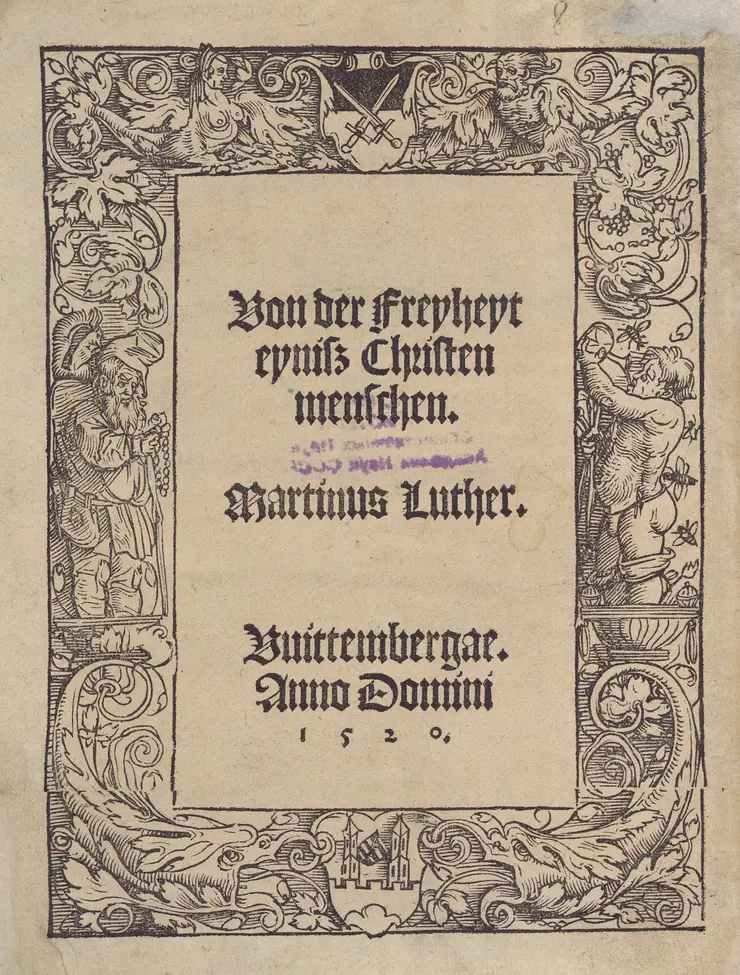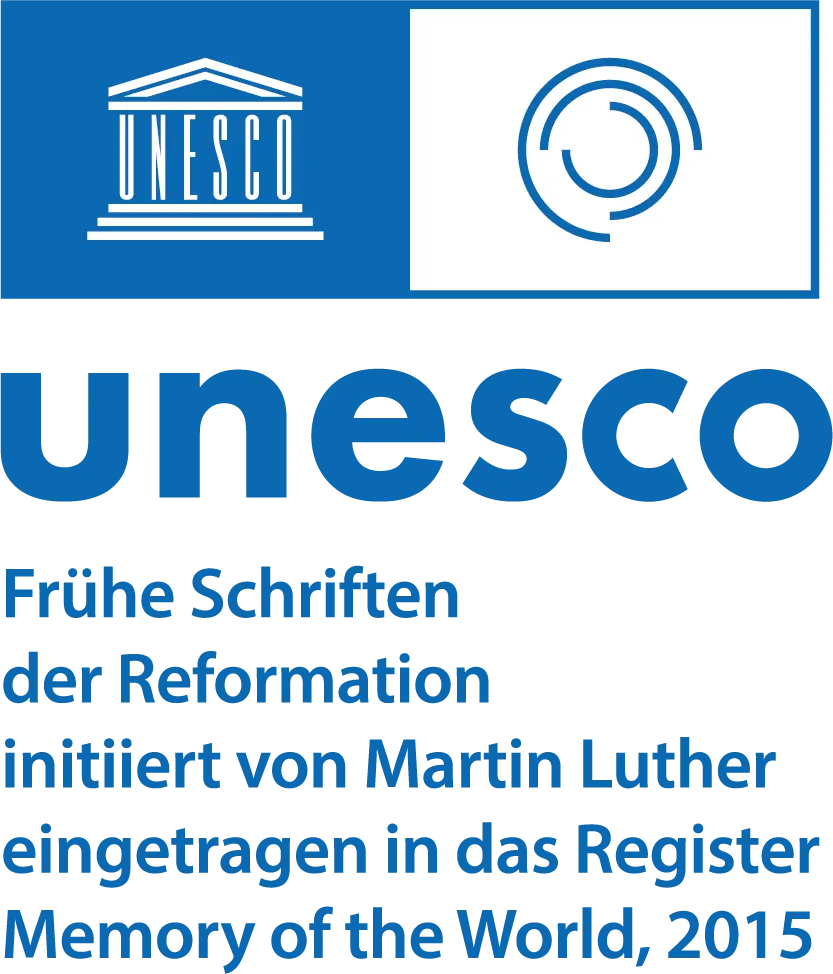In October 2015, at the request of the Leibniz Institute for European History in Mainz (IEG), the first edition of the Reformer Martin Luther's “Von der Freyheyt eynisz Christen menschen” (On the Freedom of a Christian) was declared along with 13 other objects World Documentary Heritage by UNESCO as part of its Memory of the World (MOW) programme.
With its inclusion in the UNESCO World Register, the Gotha Research Library is being recognised for its activities to preserve cultural heritage of exceptional value from being forgotten and destroyed. The Gotha Research Library supports the UNESCO programme by providing worldwide access to this culturally significant and historically important document.
Luther's freedom pamphlet is an important early work by the Reformer, which he published in the autumn of 1520, at the height of his conflict with the Catholic Church. The pamphlet is addressed to all people in German and discusses the question of freedom in religious terms. Luther’s two-part answer, based on the First Letter to the Corinthians, Chapter 9, is well known: “A Christian man is a free lord over all things and subject to no one. A Christian man is a servant of all things and subject to everyone." Man is free insofar as he is not the servant of the Church. Rather, it is Jesus Christ who acts as mediator between God and man and has set man free for action that is not focused on his own works, but rather is carried out in trust in the justification before God that has taken place through Christ. In this context, faith in the Word of God is of decisive importance, so that the Reformation principle “sola scriptura” (through scripture alone) is supplemented by the Reformation principle “sola fide” (through faith alone).
Like many of his other writings from this period, Luther's freedom pamphlet was a bestseller. After it was immediately translated into Latin, new editions appeared continuously in both languages. Since 1521, translations have been made into Czech, English, Dutch, Spanish, French and Italian. Although the number of copies is not known, thousands of copies are assumed to have been sold in Europe. The printer of the first edition was Johann Rhau-Grunenberg, who provided the woodcut of the title page with a secular decorative frame, which he also used elsewhere. The title page shows a pilgrim and a reveller, their shields held by two dolphins. Above and below are the coats of arms of the Principality of Saxony and Wittenberg.
The first print came into the court library of the ducal house of Saxe-Gotha-Altenburg under the Lutheran theologian and library director Ernst Salomon Cyprian (1673–1745), who had been active here since 1713. Around the Reformation anniversary in 1717, Cyprian acquired numerous prints and manuscripts of Luther and many other reformers on behalf of Duke Friedrich II of Saxe-Gotha-Altenburg. More than 600 of Luther's writings were brought together in anthologies, including this one, which contained 34 writings mainly from 1520 and, as number 8, the freedom pamphlet. The volume is bound in white pigskin and bears the inscription "Lutheri opera anno 1520 edita. Tom. X" on the spine.
Luther's prints and manuscripts – including 48 autographs as well as the world's largest collection of his “Table Talk” and about a quarter of his surviving correspondence – form the core of the Gotha Research Library's collection on the history of the Reformation and Protestantism. This collection is considered a reference collection for the history and reception of central and north German Protestantism.
Digital copy in the Erfurt/Gotha Digital Historical Library
Key documents of Luther's early effectiveness. Virtual exhibition by the Leibniz Institute for European History in Mainz.




